Previously: “Backrooms (Found Footage),” Explained – Part 1.
When Kane Parsons, known on YouTube as Kane Pixels, launched his “Backrooms (Found Footage)” video in January of 2022, we were all impressed — but although it was, in retrospect, unsurprising that it went viral so quickly (it’s good work, after all!), what most of us didn’t realize at the time was that the story it told was just the tip of a very large, very weird proverbial iceberg. But every few weeks in the months since then, Parsons has added onto the mythology and lore of his take on the creepypasta-like Backrooms concept, building us a sprawling narrative about liminal space and scientific hubris. And now that we’re about six months in, the question has become ever more pressing: What’s the “Backrooms (Found Footage)” timeline, exactly?
[For an updated look at the “Backrooms (Found Footage)” timeline and story summary, head here!]

That’s the beauty of non-linear storytelling, you see. The picture reveals itself bit by bit, requiring us to constantly reassess what we know and what we think we know. It makes engaging with the series as much a puzzle as it is a viewing experience, and goodness knows, I love nothing so much as a good puzzle.
[Looking for a primer on the Backrooms in general? Here’s an explainer for you.]
The last time I took a look at Kane Pixels’ “Backrooms (Found Footage)” series was in February of 2022, when there were five main videos and two supplementary ones out. It’s now June, and five more main videos have appeared, plus one more supplementary one — and with those videos, we’ve both seen additions to the “Backrooms (Found Footage)” timeline and begun digging into some ever-deepening ideas and theories about the larger universe and lore. (The creature, for example? We might know what it is now. Let’s put a pin in that thought for now — but we’ll get back to it. I promise.)
[Like what you read? Check out Dangerous Games To Play In The Dark, available from Chronicle Books now!]
So, let’s keep going with our exploration and explanation of the “Backrooms (Found Footage)” universe. First, we’ll do a quick recap to catch us up to where we were when we left off last time — partially because it’s just, y’know, useful, and partially because I’ve actually reassessed some key points from the original “Backrooms (Found Footage)” video that will be relevant for the continued discussion. Then, we’ll take the same tack we did last time: We’ll talk about the latest videos in the order they were uploaded; then we’ll fit them into the timeline; and then we’ll talk about remaining questions about the series, theories, and so on.
Get your hazmat suit on, grab your gear case, and let’s get going.
“Backrooms (Found Footage)”: The Story So Far
The first “Backrooms (Found Footage)” video dropped on Jan. 7, 2022, introducing us to what would turn out to be an ongoing story about the Backrooms phenomenon and the work of the shady organization studying it. The clip, formatted as (surprise!) a piece of found footage, was captured in the early 1990s, according to the in-universe lore, and recovered a few years later in 1996. It centered around a teenage filmmaker — a fictionalized version of “Backrooms (Found Footage)” creator’s, Kane Parsons — who “noclipped” into the Backrooms while working on a shoot and met, as they say, with a terrible fate at the hands of a huge, vaguely mechanical-looking creature lurking through the endless yellow hallways.
But although “Backrooms (Found Footage)” quickly went viral, what not everyone realized at the time was that there was more to come. Between Jan. 8 and Feb. 12, six more videos went live — four primary ones, and two unlisted ones, the links to which could be found in the description boxes of two of the primary videos — painting for us the picture of an organization called Async, their research regarding the Backrooms under the name Project KV31, and the increasingly concerning side effects their meddling has caused. The fictional version of Kane turned not to be the only person to have gone missing the Backrooms as a result of Async’s hubris; he was just — as the story stood — the most recent.
We left off with the video “Backrooms – Informational Video,” which was uploaded on Feb. 12, 2022 and bore an in-universe date of Feb. 29, 1990; it followed a team of Async personnel as they explored the Backrooms, only for one of their number to become separated from the group and wander into some sort of observational room or control center. Notably, 1990 was not a leap year; ergo, Feb. 29, 1990 is not a day that actually exists. Not in our world, at least.
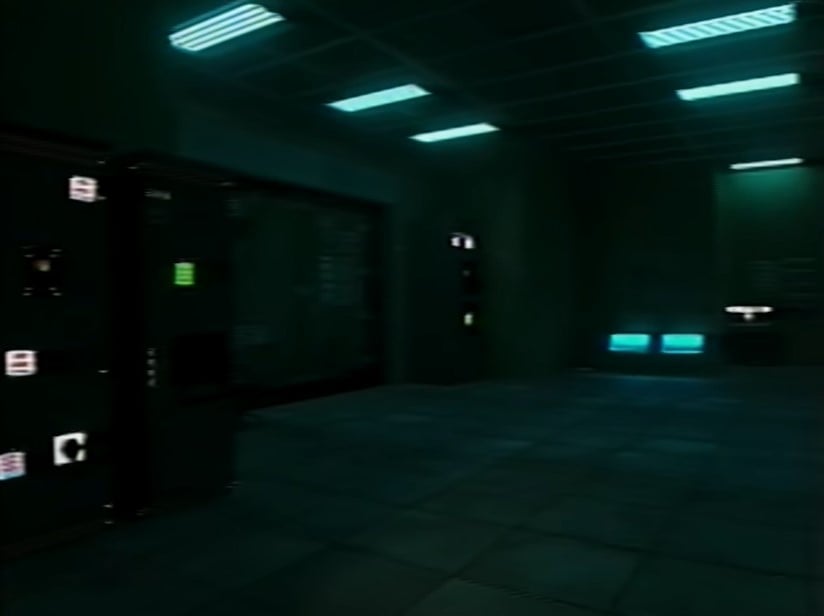
Now, as I noted up top, I’ve got a few updates about how I’ve been thinking about the first video of the series — and I’m pointing them out here because they have a ripple effect on the rest of my understanding of the series.
First, although I’d noted that there was some debate over what year “Backrooms (Found Footage)” actually takes place in, I’ve since settled on a specific answer, as has most of the fan community: The events of “Backrooms (Found Footage)” occurred in 1991.
The debate centered around the clapper seen in the opening moments of the clip. It does give us a date, but through a combination of difficult-to-read handwriting and the low-res nature of the footage (teen filmmaker, early ‘90s, non-digital recording methods — you do the math), it’s a little difficult to see. I initially read it as 7/4/91, or July 4, 1991, but some folks thought that the second digit of the year may have been scrubbed out — that is, that the clapper read 7/4/9_. The more I looked at it, though, I just… couldn’t see it as reading anything other than 7/4/91. That also seems to be the generally accepted date within the larger fandom, as well, so for now, let’s assume it to be accurate.
Second — and perhaps more importantly — is this: Originally, I’d thought that at the end of “Backrooms (Found Footage),” the creature pushed Kane out of the Backrooms, and that both he and his camera tumbled out and made the crash landing together. However, it was pointed out to me in the comments (thanks for the heads up!) that Kane does not actually fall with the camera: The camera falls without him, landing all on its own back in the “real” world. This is because, when the creatures catches Kane, it actually snatches him up, causing him to lose hold of the camera. If we look carefully at the final moments, at around the 8:29 mark, we can see the creature holding Kane’s body aloft:
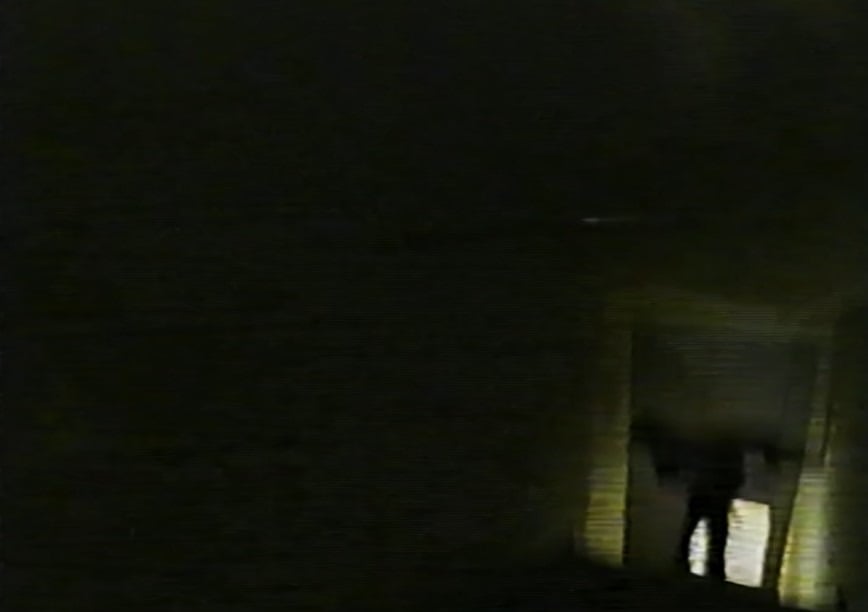
The camera subsequently falls, while Kane — or what’s left of him — remains in the Backrooms.
This detail might end up mattering a great deal, depending on a few other pieces at play within the larger universe… but let’s not get ahead of ourselves. We’ll talk about why that detail could potentially be so important a little later.
For now, let’s do what we said we would: Catch up with the videos that have gone live in the past few months.
Ready?
Here we go.
The Async Saga Continues
Following “Informational Video” is “Backrooms – Autopsy Report,” which was uploaded on Feb. 23, 2022 and is dated Feb. 5, 1990. In the timeline, this detail places “Autopsy Report” between “Missing Persons,” which is dated Feb. 3, 1990, and “Informational Video,” which documents the non-existent date of Feb. 29, 1990. As its title might suggest, the video presents us with the results of an autopsy performed on the human remains discovered in “Missing Persons.” The autopsy is conducted by an examiner or pathologist from the Async Department of Biomedical Sciences, per the title card at the beginning of the video.
We learn that the subject — a John Doe — is male and likely between the ages of 18 and 21. The examiner estimates the time of death as being “five days ago,” meaning the subject had been dead since about Feb. 1 — that is, he had been gone for roughly three days by the time Async personnel discovered him. The examiner notes, however, that the timeline is a little uncertain, due to the “severe tissue damage” present in the subject.
The cause of death, per the examiner, was likely malnutrition, from which can infer that the John Doe had been lost in the Backrooms for some time: A person can survive for about three weeks with no food. (If he also lacked water — which, I would argue, is likely — he would have expired sooner; severe dehydration can kill you in a matter of days.)
However, the key pieces of information offered up by John Doe’s remains puzzle the examiner: First, he observes that the “decomposition process appears to have been… stunted”; the body didn’t decay at the same rate all over. Some portions, he notes, were “sustained,” while others had been “completely overtaken by culture” — the black fungus or bacteria the Async personnel who recovered the John Doe observed at the site of discovery. Initially, the examiner thought the fungus was “an aggregated collection of pseudomonas fluorescens”; but, upon closer examination, he says he found it to be more like “a mutated strain of simple hay bacillus.”
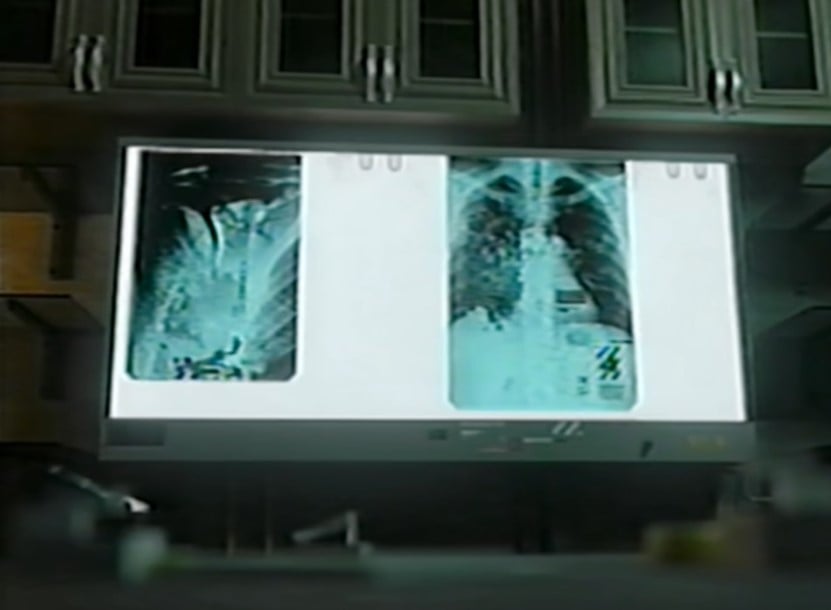
Pseudomonas fluorescens rarely causes disease in humans, but it’s responsible for fin rot in fish. It’s also a common cause of food spoilage. Meanwhile, hay bacillus — also called Bacillus subtilis — doesn’t usually cause harm to humans; indeed, it’s often used as a probiotic: Most strains are safe to eat; it can be found in foods such as natto, the fermented soybean dish commonly eaten in Japan. It does, however, cause “ropiness” in bread — a form of food spoilage that results in a sort of spongy texture.
The examiner notes that the presence of hay bacillus “should be benign.” However, he seems to think that it’s doing something… odd to the human remains, although he doesn’t describe exactly what that is.
We then learn that the examiner is giving the autopsy report directly to Ivan Beck, the vice director of Async we were introduced to in the video “Third Test.” We also learn that the examiner was not told where the remains were found, or under what circumstances: We hear him ask, “Mr. Beck, may I ask where this subject came from?”
After that, we see a monitor displaying a sequence of images, including what looks to be a notice of termination of employment. From this, we can infer that the examiner was likely fired — probably for asking too many questions.
Next, we get “Backrooms – Motion Detected,” uploaded on March 11, 2022 and dated March 5, 1990. Timeline-wise, it sits between “Informational Video” and “Mar11_90_ARCHIVE.tar.” In it, we see that research is continuing apace for Async: They’re starting to construct a control room within the Backrooms, and they’re setting up motion- and noise-activated cameras so they can observe what’s going on in there when they’re not necessarily present. They set up seven cameras overall, each mounted on tripods and placed at strategic positions.
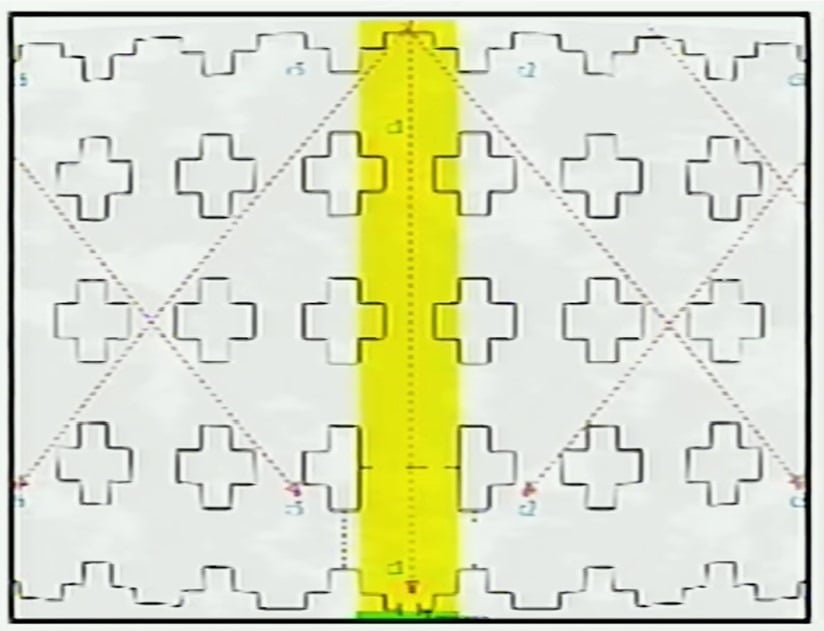
Then, we see a log of recorded events occurring on Monday, March 5, 1990. (For the curious: Yes, March 5, 1990 was, in fact, a Monday — a piece of information I’d argue makes the earlier inclusion of Feb. 29, 1990 all the more important.) The first four events are unremarkable—they’re just Async personnel coming and going. But the final three events? Those are… curious.
First, at 1:06 am in the early morning of March 6, Camera 2 begins recording after the detection of noise. It’s unclear what the noise is — but it sounds similar to some of the noises we’ve heard in previous videos, when… something has been near. The Backrooms appear to be empty, per the visuals recorded by the camera.
Then, at 2:13 am, Camera 3 begins recording after the detection of noise — but the microphone fails, so all we hear is fuzzy feedback. Again, the Backrooms appear to be empty.
Then, at 3:53 am, Camera 5 begins recording after the detection of motion. We see the Backrooms, empty — and then… something peeks around the corner of the hallway on the left-hand side. Then it pulls back again. The image is later upscaled and enhanced, showing us this:
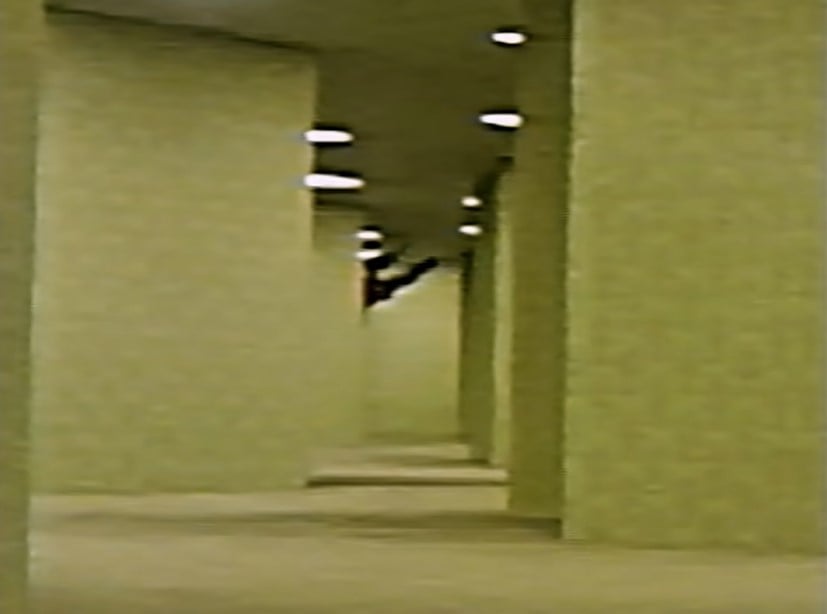
Sure looks like the tendrils of a black, fungus-like substance, doesn’t it?
The next video is very short — only a minute and a half in length — but it has many, many implications. Titled “Backrooms – Prototype,” it was uploaded on March 28, 2022 and bears an in-universe date of May 10, 1982, placing it at the very beginning of timeline — before even “Third Test,” which is dated 1988. We’re told in a title card that the video appears to us “courtesy of Oak Ridge National Laboratory,” and that what follows was “conducted on May 10, 1992 under the supervision of Philip R. Heymann.” We see footage of some kind of large device with eight arms, firing up, glowing yellow, and then winding back down again. It’s not clear exactly what it is, but it’s very clearly the technology that will later be developed to create the Threshold — the door by which Async will access the Backrooms beginning in 1989 with the sixth test.
Here’s why this matters: Oak Ridge is a government facility — a research and development center for the Department of Energy. Originally opened in 1943, the lab is located in Oak Ridge, Tennessee (hence its name).
So: What we see here is that, by 1982 — six years prior to the 1988 press conference referred to in the video “Third Test” — research into the Backrooms had not only already started, but was well under way and beginning actual testing. And furthermore, at this stage, there was government involvement of some sort — but there wouldn’t be by in 1988.
It’s not clear whether Project KV31 was originally a government project that Async eventually took over, or whether Project KV31 was always an Async project that initially had government backing that was later pulled — but something of the sort was going on. And that’s… interesting.
Just a few days later, on May 1, 2022, “Backrooms – Pitfalls” arrived, with an in-universe date of May 6, 1990, placing it between “Motion Detection” (and the compilation of the “Mar11_90_ARCHIVE.tar” file) and the original “Backrooms (Found Footage)” video. At over 14 minutes, it’s the longest video to date, and chronicles the most eventful Async expedition into the Backrooms we’ve seen so far.
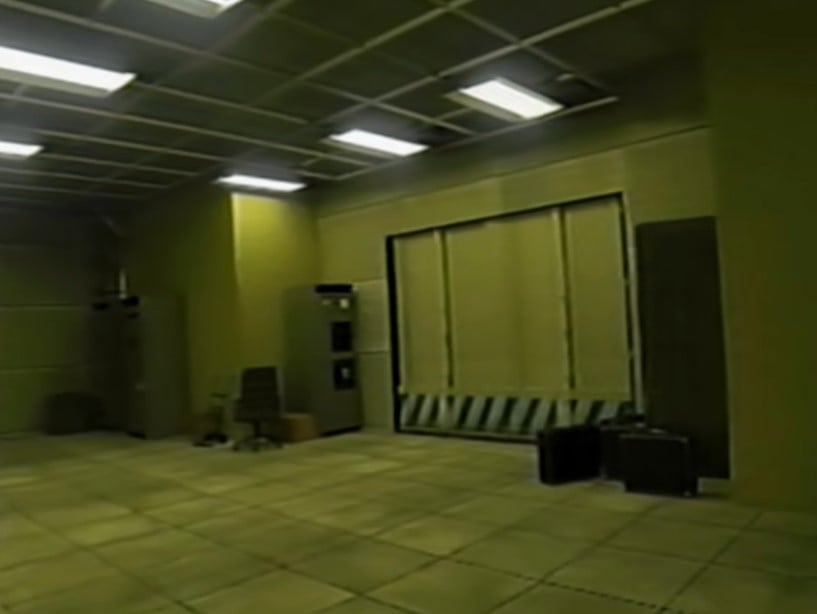
By this point, the construction we saw beginning in “Motion Detected” has been completed; now, when Async personnel pass through the Threshold and enter the Backrooms, they enter first into a control room. This control room functions like a vestibule or waystation, giving them a place to gather themselves before proceeding into the Backrooms proper.
We follow a team of four, including a cameraman identified in a title card as Marvin E. Leigh, as they cross the Threshold, pass through the control room, and then enter into the Backrooms. They bolt down the large, red spool which doles out the line they take with them so they can find their way back later — and eventually, they discover an area that’s new both to them and to us: A room full of rows and rows of large, square holes. Pits, you might call them. At the other end of the room is a platform with a door, which of the crew crosses to, balancing precariously on the edges between the pits; when he opens it, we don’t see what’s on the other side — but he requests that Marv, with the camera, get over to him as quickly as he can.
Marv, however, falls during the crossing, losing his balance and tumbling down one of the pits. He winds up in a lower level — and when he hears a voice that sounds like a person calling for help, he goes exploring. After passing through several unusual areas — a suburban neighborhood, through the door of a house into an interior space that is… not what should be inside a house — he encounters the creature we saw snatch Kane up in the original “Backrooms (Found Footage)” clip.
It seems to have been… imitating the sound of a human voice.
In other words: It set a trap for Marv. And the trap worked.
It chases him, but Marv escapes, running back to the place he landed in, where his colleagues have been able to rig a line for him to climb up in the meantime. He climbs up to safety.
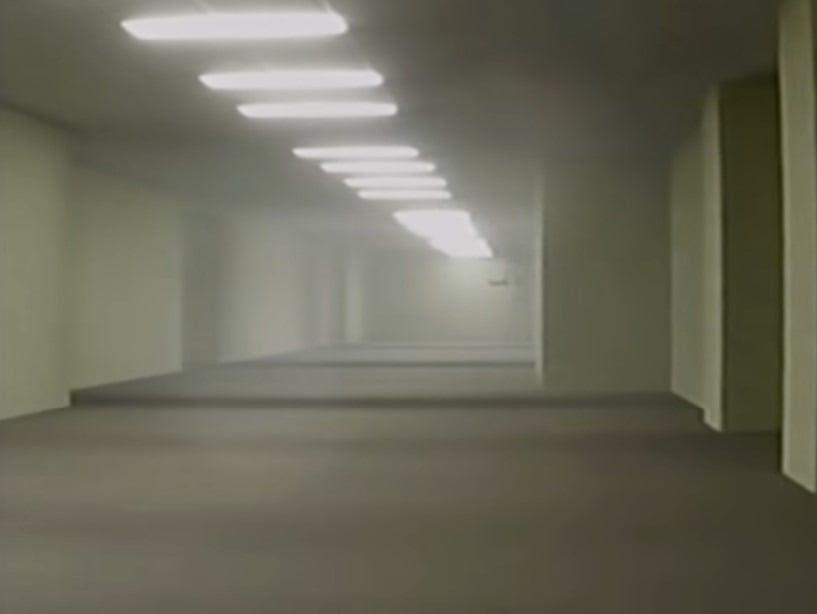
“Backrooms – Report,” uploaded on May 20, 2022, is dated May 6, 1990, and immediately follows “Pitfalls.” Interestingly, this video is stylistically very different from all of the previous videos: It’s not found footage, or analog horror; it’s a piece of standard, third-person narrative filmmaking. We watch as the team returns, and as various Async personnel watch Marv’s footage. From their reactions, it’s clear that this is the first time any of them have seen the creature — indeed, the first time they even realized there was a creature inside the Backrooms in the first place. We see a phone call being made — and then we see construction: Lots of construction. The area leading to the Pit Room is boarded up, and extra blast doors are installed in the control room. Clearly, Async will not be exploring that area further; even they think it isn’t safe.
As a sort of stinger, there’s a link to an unlisted video included in the description of “Report”: A video titled “9780415263573,” which was uploaded on May 20, 2022, but has no in-universe date associated with it. We see footage of cars traveling along a highway, as if observed from a traffic cam. We zoom in one section — and we see a car blink out of existence. It has, no doubt, noclipped into the Backrooms.
Notably, 9780415263573 is the ISBN for “The Yellow Wallpaper” by Charlotte Perkins Gilman. Originally published in The New England Magazine in January of 1892 and now a staple of American literature courses everywhere, this short story centers around a young woman with PPD whose physician husband orders her to undergo a “rest cure” in their new home. Shut up in a room decorated with hideous yellow wallpaper and confined to her bed with nothing to occupy her, she becomes convinced that there’s another woman creeping around behind the wallpaper, trying to get out.
Curious, no?
For what it’s worth, it feels like we may have hit the end of an arc right now — but to me, it also doesn’t feel like the story as a whole is over. I suspect think there’s still more to come; somehow, I just don’t think we’re done with Async yet.
While we’re waiting, let’s take stock of where we’ve been and where we’ve landed, shall we?
The “Backrooms (Found Footage)” Timeline, Updated
For the curious, you can access the full playlist of “Backrooms (Found Footage)” videos, minus some of the unlisted ones, at the Kane Pixels YouTube channel. But to sum it all up in writing, here’s the updated timeline and story of the “Backrooms (Found Footage)” series as I currently understand it:
Sometime prior to 1982, early development of what will eventually become Project KV31 and the study of the phenomenon known as the Backrooms begins. It is possibly a government project; at the very least, it has some government support. During this period, a prototype of the key Project KV31 device is designed and constructed. (“Backrooms – Prototype.”)
On May 10, 1982, a test is conducted on the prototype of the Project KV31 device at Oak Ridge National Laboratory under the supervision of a Philip R. Heymann. It is unknown whether the test is considered a success or not, or what conclusions might be drawn from it. (“Backrooms – Prototype.”)
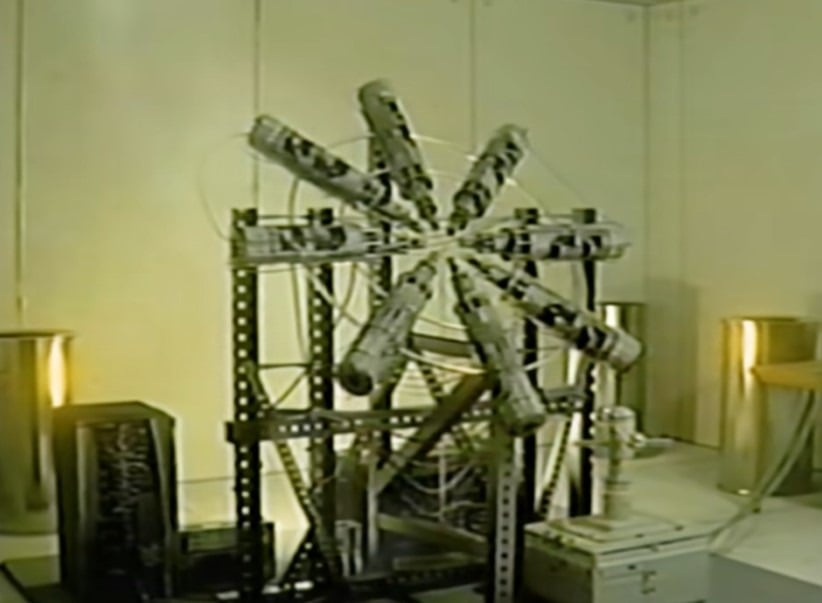
Sometime prior to the late 1980s, the research organization calling itself Async builds a facility in an undisclosed location for the purpose of studying the Backrooms. (Files seen in “Mar11_90_ARCHIVE.tar.”) It is unknown whether Async has taken over the development of Project KV31 from the government since the 1982 prototype test; whether Async was previously working alongside the government scientists who developed the prototype; whether Project KV31 was always an Async-led project operating with support of the government; etc.
In April of 1988, Async makes their research public knowledge in a press conference — sort of. Async vice director Ivan Beck does not announce anything about the Backrooms themselves, but states that Async has been developing a “low-proximity magnetic distortion system” with the aim of finding “a solution to current and future storage and residential needs” while “[saving] billions of dollars on property construction and management.” It is clear that by this point, there is no active government involvement in Async’s research, as they state that they require funding from the government in order to continue their work. They have been conducting tests — at least two so far — which they hope will garner enough interest for the funding to emerge. (“Backrooms – The Third Test.”)
On July 2, 1988 at 3:17am, Async conducts the third test on their low-proximity magnetic distortion system. The results of the test haven’t been released, but they don’t seem to have achieved success yet: They’ve created the doorframe they hope to use access the Backrooms, and they’ve even managed to crack the door open, so to speak — but before the door, known as the Threshold, can fully open, it slams shut on them. (“Backrooms – The Third Test.”)
On Oct. 17, 1989 at 5:04pm, Async conducts their sixth test on their low-proximity magnetic distortion system. At first, it looks like the system is overloading; orders are heard to “shut it down,” that it’s “not safe” — but then, something appears: Something that looks like it might be a map of the Backrooms. As the dust clears (literally), we see that the Threshold is properly open for the first time — that is, it’s not just a glowing rectangle of light; we can see into the Backrooms, as we now know them to be. The test ends with the scientists entering the Backrooms for the first time. (“Backrooms – First Contact.”)
Simultaneously with Async’s sixth test, the Loma Prieta earthquake hits the Central Coast of California, with the epicenter located on the San Andreas Fault System between Santa Cruz and San Jose, specifically in the Forest of Nisene Marks State Park in Santa Cruz County. The quake is huge; with a magnitude of 6.9, it causes 63 deaths and 3,757 injuries, along with $5.6 to 6 billion of damage is caused (equivalent to $11.7 to 12.5 billion now). The implication is that the test — and the opening of the Backrooms — caused the earthquake. It’s also possible that the epicenter of the quake indicates the location of Async’s facility. (“collateral.mov.”)
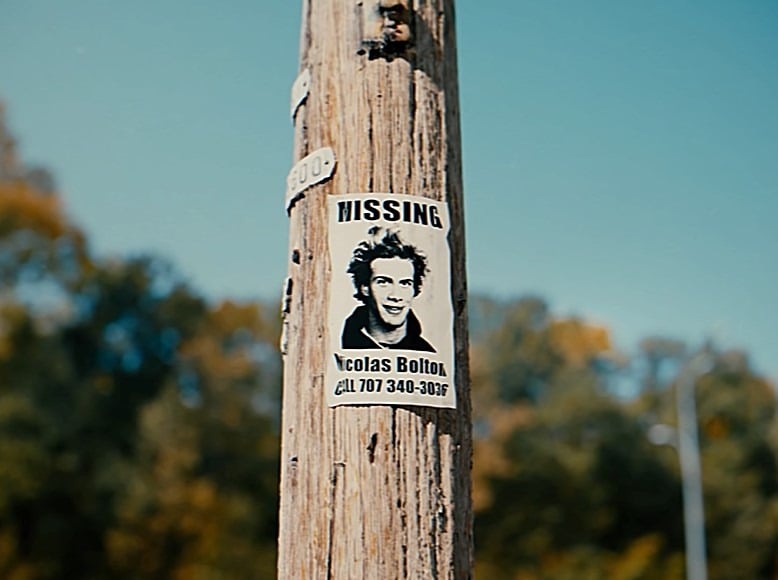
In the years following the sixth test, the number of reported missing persons cases goes way, way up. Among the missing are: Nicholas Bolton, Margaret Watson, Janice White, an unnamed white man, and two-year-old Ellis White. The implication is that, with the door to the Backrooms now permanently open, all these missing people “noclipped” in and were never able to find their way back out. (“Backrooms – Missing Persons.”)
On Feb. 3, 1990, Async conducts an exploration of the Backrooms. During their exploration, they discover the remains of a man — presumably one of the missing people. He, the floor he is sitting on, and the wall against which he is leaning are covered in some kind of organic matter, possibly “some kind of fungus,” as the Async folks put it. It’s a new development; they’ve never encountered anything like this before. It’s not even clear whether they knew that regular people were getting lost in the Backrooms. (“Backrooms – Missing Persons.”)
On Feb. 5, 1990, the Async Department of Biomedical Sciences conducts an autopsy on the remains located within the Backrooms two days prior. The subject, a John Doe, is identified as biologically male and between the ages of 18 and 21. The examiner estimates that the time of death was “five days ago,” placing it around late January/early February. The cause of death is identified as malnutrition. The body has severe tissue damage, and, oddly, has seemingly not decayed at the same rate all over. The examiner identifies the fungus present in the remains as “a mutated strain of simple hay bacillus.” The examiner delivers the report directly to Ivan Beck, inquiring as he does so about whether he might be told where, precisely, the remains were discovered. The examiner’s employment may have later been terminated by Async as a result of his question. (“Backrooms – Autopsy Report.”)
On Feb. 29, 1990, Async conducts another exploration of the Backrooms. One of the four Async personnel who enters the Backrooms for this exploration becomes separated from the others. He hears something — a crowd, music, perhaps — and turns down a hallway, but when he turns back, asking if his companions can hear it, there’s some sort of glitch and suddenly, he’s alone. He wanders the hallways, finding a few unusual rooms — one with some risers and something crumbled in the middle of the floor; a hallway wallpapered in a green, leafy print, with tools like wheelbarrows and a sledgehammer strewn around, and the façade of a barn — and then, finally, a door that looks like an exit door. When he steps through it, he finds himself in what looks like an Async observation or control room — but the lights are off and the room is empty of other people. When he speaks, the lights go red and an alarm sounds. We don’t know what happens to him after that. (“Backrooms – Informational Video.”)
Note that Feb. 29, 1990 is an impossible date, as 1990 was not a leap year.
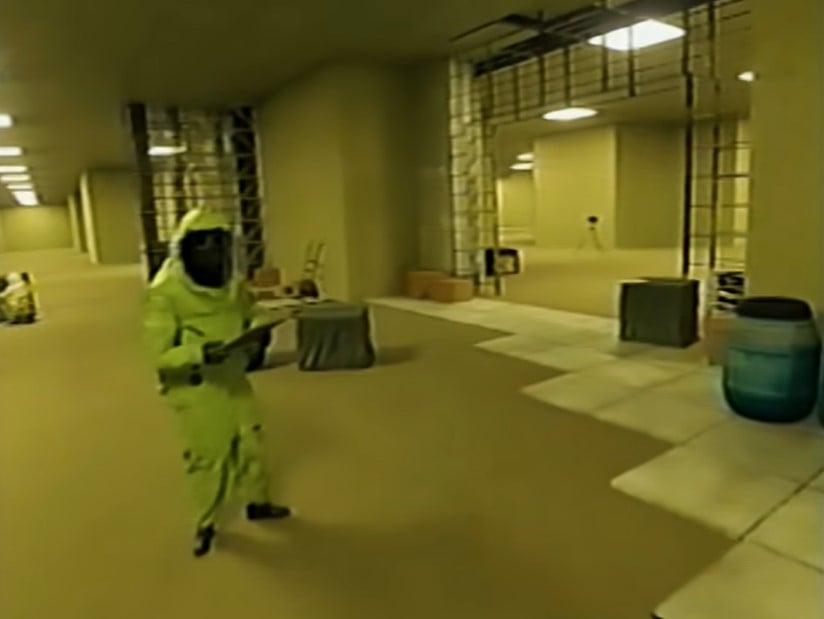
By March of 1990, Async has begun constructing an observation or control room within the Backrooms, directly on the other side of the Threshold. (“Backrooms – Motion Detected.”)
On March 5, 1990, Async personnel set up seven cameras within the Backrooms at strategic points for monitoring purposes. The cameras, mounted on tripods, are motion- and sound-activated; they will begin recording “when motion or substantial noise is detected.” The log of activity recorded that first night reveals nothing unusual until the early morning hours of March 6: At 1:06 am and 2:13 am, we hear some strange noises, but see nothing beyond the Backrooms themselves; then, at 3:53 am, we see something—perhaps black tendrils of fungus or bacteria — appear in the distance on Camera 5. (“Backrooms – Motion Detected.”)
On March 11, 1990, numerous photos and files from Async’s history and the development of the facility are compiled into a TAR archive. (“Mar11_90_ARCHIVE.tar.”)
By May of 1990, construction on the control room within the Backrooms is complete. Entering the Backrooms through the Threshold now deposits Async personnel into this control room, which functions as a sort of vestibule between the Async facility and the rest of the Backrooms. After passing through this vestibule, personnel may enter the Backrooms proper. (“Backrooms – Pitfalls.”)
On May 6, 1990, Async conducts another exploration of the Backrooms. A team of four enters the Backrooms, with team member Marvin E. Leigh documenting the exploration on camera. During this exploration, the team discovers a room they have never seen before, with a series of rectangular pits covering the entire floor. A platform with a door lies on the other side of the room. One team member is sent across the pit-filled floor to investigate the door; when he opens it, he requests that Marv cross as well to document whatever is on the other side of the door.
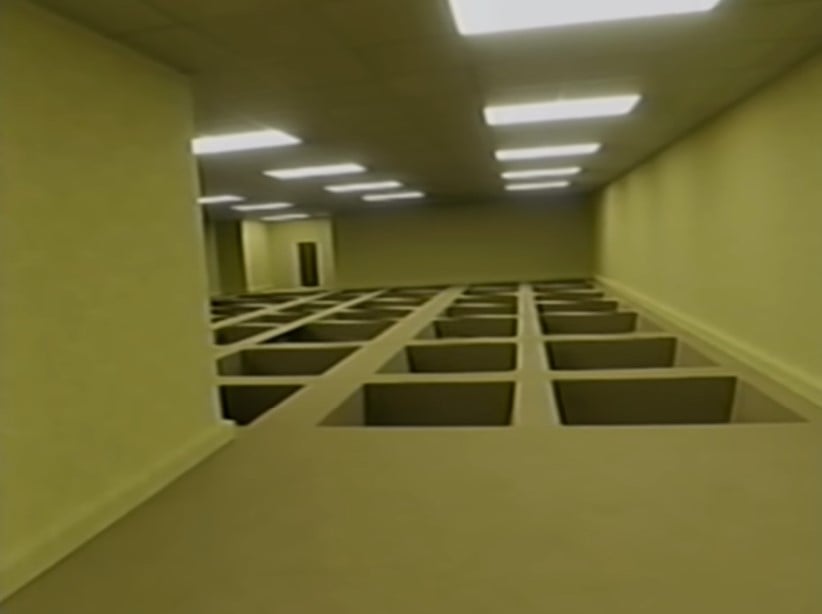
Marv loses his balance during the crossing and tumbles to a lower level of the Backrooms. He hears what sounds like a man yelling for help, and upon investigation, discovers another new section — one that, oddly, resembles a suburban neighborhood. When he enters one of the houses, however, he encounters a creature. Marv runs while the creature gives chase. He manages to escape, making it back to the hole he dropped through and grabbing a line his colleagues have been able to assemble for him in the meantime. He climbs up and out. (“Backrooms – Pitfalls.”)
Following the May 6 excursion, numerous higher-ups within Async view Marv’s footage and learn of the existence of the creature for the first time. A phone call is made. The hallway leading to the area of the Backrooms housing the Pitfall Room — and, Async assumes, the creature, which is clearly dangerous — is boarded up to prevent further access. Extra blast doors are also installed in the control room for added security. (“Backrooms – Report.”)
On an unknown date, an unidentified car driving down an unidentified highway in an unidentified location vanishes. The implication is that it noclips into the Backrooms. (“9780415263573.”)
On July 4, 1991, a group of teenage filmmakers are shooting a horror film when their cameraman, Kane, “noclips” into the Backrooms. He explores Level 0, is chased by a creature, jumps into Level 1, possibly sees Level 2, then finds a way back to Level 0. He is chased by the creature again and hides. While hiding, he finds a square hole in the ground. The creature finds him and grabs him, causing him to lose hold of the camera. The camera emerges from the Backrooms back into reality, falling from a great height and smashing into the ground. Kane remains in the Backrooms, although we do not otherwise see what becomes of him. (“Backrooms (Found Footage.)”)
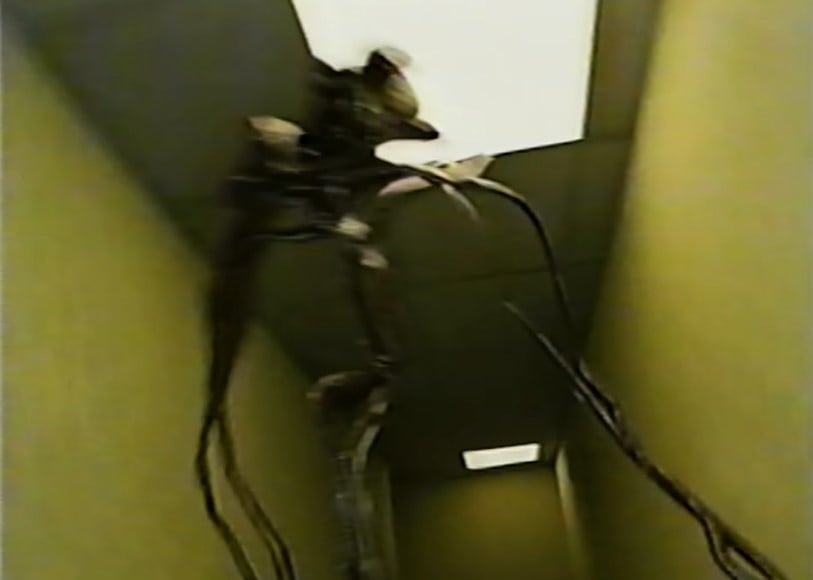
On September 23, 1996, Kane’s footage is recovered by an unknown person. (“Backrooms (Found Footage.)”)
In January of 2022, an unknown person begins uploading footage of the Backrooms, Async’s research, and the consequences of the organizations actions to YouTube, starting with Kane’s footage from 1991. Their identity and motivations remain unknown. (Playlist: The Backrooms.)
Again: The timeline has filled out a bit, and we may have reached the end of an arc. But at the same time, it doesn’t feel like we’re not done yet; I think there’s still much more to come. There are still a lot of gaps in the timeline, and many more questions to ponder in the meantime.
Answers, And More Questions
Some good news, though, as we embark upon that pondering: A few of the questions I posed in my last examination of this series have since been answered.
For instance, the biggest question — to my mind, at least — was whether Async had created the Backrooms, or merely found them. I favored the idea of them finding them, rather than creating them — and, according to the actual Kane Parsons, this is, in fact, the case: He confirmed on Discord not too long ago that “the Backrooms were found, not created.” Boom.
But many questions still remain; indeed, in some cases, the answers have really only served to inspire more questions. At the top of my mind are the following:
The Creature
The confirmation that the Backrooms were found, not created, feeds directly into a possible answer for a question I previously had about the nature of the creature: Was it already in the Backrooms when Async opened them up, or are they responsible for the creature’s existence in some way, shape, or form? The answer might actually be… both.
The black fungus appears to be native to the Backrooms — and it also seems to be sentient, and perhaps capable of evolution. The first time we encounter it is in “Missing Persons,” where we see it all over the human remains recovered from within the Backrooms and later autopsied in “Autopsy Report.” By “Motion Detected,” which occurs about a month later, we see it… moving. It’s somewhat formless, but it’s not just splattered everywhere. It’s capable of movement, and it’s curious about what it’s seeing.
“Motion Detected” is also — crucially — where we see Async introduce something non-native to the Backrooms… and leave it there: The tripod-mounted cameras.
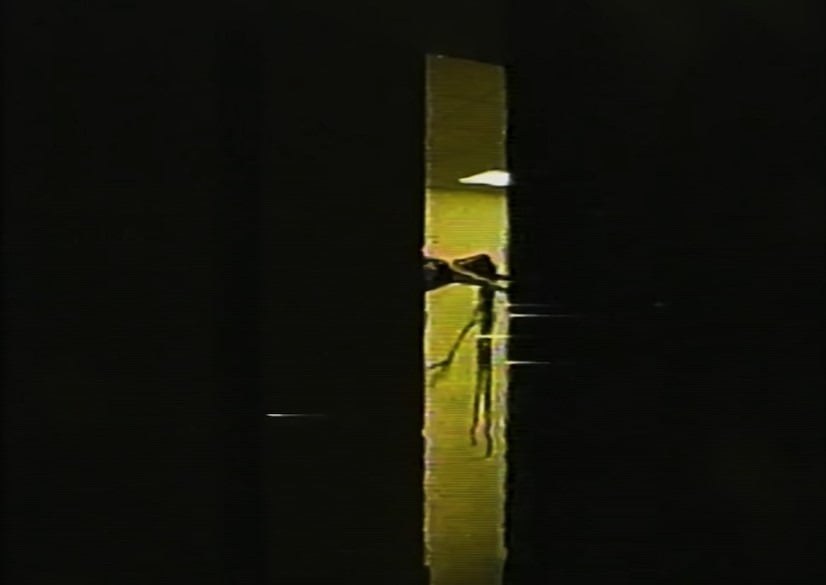
Meanwhile, when we begin encountering the creature — first, timeline-wise, in “Pitfalls,” and then later in “Backrooms (Found Footage)” — it’s not immediately clear to us what exactly it is; we know, though, that it’s tall and spindly, and seemingly wrapped in wires. It’s also capable of making human-like sounds, almost like a voice.
And if you look really, really carefully at it in both “Pitfalls” and “Found Footage,” its limbs and body look an awful lot like… a tripod. And its head? Its head resembles a camera. It’s all distorted — but the resemblance is… uncanny.
So: What is the creature? My theory is that it’s a combination of something native to the Backrooms, and something foreign that Async introduced to them: The creature may well be one of Async’s tripod-mounted cameras, mutated by the bacteria.
Of course, Async didn’t just put one camera in the Backrooms. They put seven there. So: How many creatures are there? We don’t know yet, but if the bacteria is intelligent, I’d be willing to bet that there’s more than one (and, indeed, some theories posit that we’ve already seen three to four different versions of the “Bacteria,” as it’s sometimes called). And they may not all be tripods, either.
The Government
A new question that was introduced in this batch: What’s the government’s involvement? “Prototype” suggests that Project KV31 was initially a government project — or at least a project that had received government support, such as access to a government lab. By 1988, though, Async was seeking government funding for their continued work on Project KV31 — that is, it seems that by the time of the April 1988 press conference, the project had been without government support for some time. We don’t know what happened between 1982 and 1988, or even how involved the government was back in 1982, so I have questions about… all of that, really.
The theory that feels the most plausible to me right now is that the project started with government funding or support; the funding was pulled sometime in the early or mid-1980s, possibly due to concerns regarding the unknown and potentially dangerous nature of the project; Async sought government funding again in 1988; somehow, they acquired funding, although whether or not it was from the government hasn’t been made clear; and as the research has continued, the organization has constantly been trying to keep the growing issues and side effects of their research, like earthquakes and missing people, under wraps so they don’t lose their funding again.
We don’t know for sure yet, though. And honestly, it may not even ultimately have much bearing on the rest of the narrative as it goes, so I’m kind of willing to let this one lie for now.
Time Travel
Up until now, the biggest oddity in the timeline was the events of “Informational Video” occurring on Feb. 29, 1990, when 1990 did not have a Feb. 29. At the time, I wondered whether this was indicative of the entire series occurring in a different timeline than our own.
Now, though, I have to wonder: Is time travel is part of the equation?
(Update: The answer is yes; scroll down to the bottom of this section for a quick look at how we know.)
The biggest thing to discuss here is the control room — the one that Async built within the Backrooms between March and May of 1990 (that is, between “Motion Detected” and “Pitfalls”). When the control room made its full appearance at the beginning of “Pitfalls,” it looked to me quite similar to the one that our lost Async team member stumbles upon at the end of “Informational Video.” But how could that be, given that construction hadn’t begun on it when the events of “Informational Video” occurred? Furthermore, why did it looks so much lived in by “Informational Video”? It was so new in “Pitfalls” that there were still cardboard boxes in the room; by “Informational Video,” however, it appeared to have been in use for quite some time.


Remember, though, that according to the original Backrooms concept, time doesn’t work the same way in there that it does out here — which means that… pretty much anything goes in there. This, combined with the way “Informational Video” unfolds, suggests that we might be dealing with time travel: The Async employee in “Informational Video” — who, you’ll recall, entered the Backrooms in February of 1990, before construction had begun on the control room — could have, during the course of his exploration, been transported somehow to a period of time after May of 1990, when the control room had already been long since completed. It would explain why he seemed a little confused by it; it didn’t exist in his time.
There are a few differences in the rooms between videos — in “Pitfalls,” it has two observation windows, whereas in “Informational Video,” there’s only one, and the blast doors don’t look quite the same — so the idea that they’re the same room is a bit tenuous. The contours of the spaces are the same, though, so it also could simply be the case that a few renovations were done in the meantime.
Of course, that prompts the question of when the employee in “Informational Video” ends up; it… looks like it could be quite late in the timeline. We also have to wonder how that footage was recovered, as we don’t know what happened to that employee after the alarms went off yet. But… we’ll get there. Eventually. I think.
(Update: A new “Backrooms (Found Footage)” video posted on June 25, 2022, “Backrooms – Presentation,” confirms that time travel is, in fact occurring. Dated May 8, 1990, it shows us the very end of “Informational Video” from another perspective — and, crucially, from another point in time: Here, we see the Async team member who disappeared during the Feb. 29, 1990 exploration seen in “Informational Video” reappearing in the control room several months later. I’ll cover this in depth in a future installment of our “Backrooms (Found Footage)” Explained series, but I did want to take a moment to point out this development out in the meantime.)
John Doe
Related to the idea of time travel is the question of who the John Doe is in “Missing Persons” and “Autopsy Report.” Last time ‘round, I was of the opinion that the remains found in “Missing Persons” belonged to Nicholas Bolton — one of the, uh, missing people highlighted at the beginning of the video. To my eye, the body resembled the photograph of Bolton on his “missing” poster, right down to the hoodie, so it seemed reasonable enough to assume the John Doe to be Bolton. The fandom is largely in favor of this theory, as well.
And yet, the possibility of time travel, combined with my realization that the fictional Kane in “Backrooms (Found Footage)” did not tumble out of the Backrooms to his death, but was rather caught by the creature and remains in the Backrooms, brought a new idea to mind:
What if the remains found in “Missing Persons” are Kane’s?
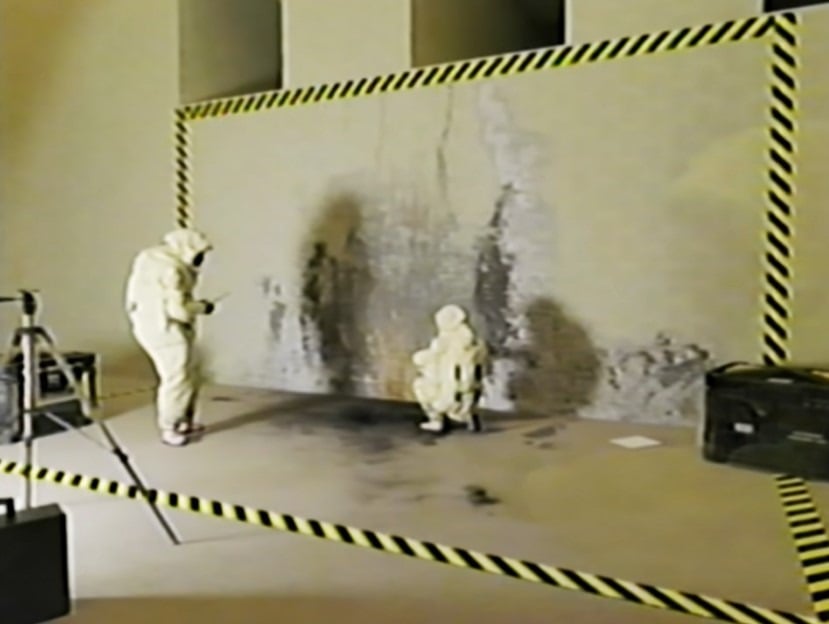
If time travel within the Backrooms is possible, it’s not outside the realm of possibility that Kane could disappear in 1991, get stuck in the Backrooms and caught, and then be transported — either alive or dead — to 1990 for discovery in “Missing Persons.”
Right?
In some ways, that narrative is actually more satisfying to me than one where the remains are Nichols Bolton’s. It brings the original “Backrooms (Found Footage)” back into focus — calling it back, as it were — and makes it a much more central part of the story that’s unfolding.
Alas, there’s no real evidence to support this theory right now. We really don’t see what Kane looks like, since we’re seeing through his eyes for the vast majority of “Backrooms (Found Footage)”; therefore, we can’t compare what he looks like with the remains as they’re depicted in either “Missing Persons” or “Autopsy Report.” (The quick glimpse of the creature grabbing him at the end of the video isn’t nearly clear enough to use for comparison purposes.) But I still like the idea, and I’ll be interested to see if John Doe is ever fully identified within the lore of the series.
I do find it curious that the remains were found sitting below three rectangular openings in the wall — openings that look rather like the one that Marv fell through in “Pitfalls.” The implication might be that these holes go to an upper level, or that whoever the remains belong to fell down to the current level, or that whoever the remains belong to was trying to escape to a higher level at the time of his death.
Loose Ends
Lastly, two random questions that may or may not be of any actual importance:
What was behind the door in “Pitfalls?” Because Marv falls, we never see what it was that made his colleague so adamant that he bring the camera over to film it — but whatever it was, it clearly shook him. What was it?
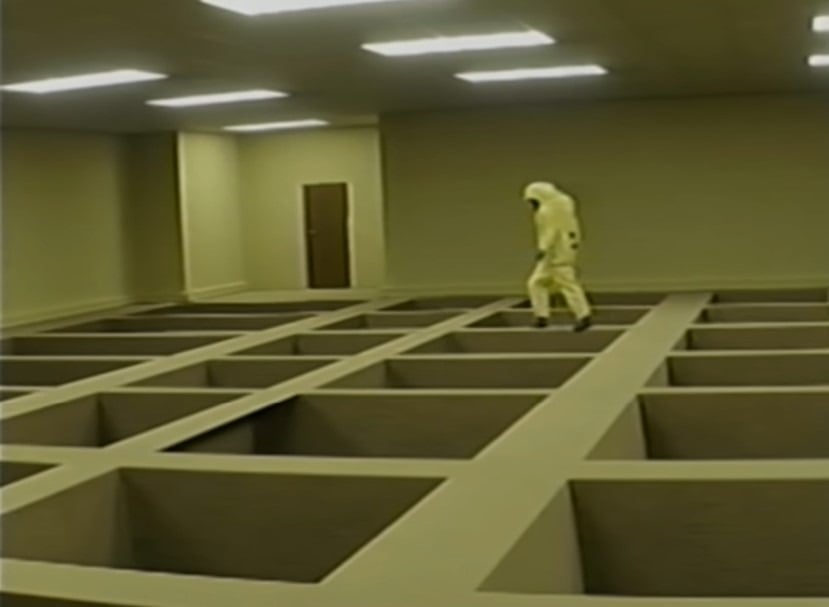
What’s the significance of “The Yellow Wallpaper?” When you Google the seemingly random number that gives the final unlisted video its title, the ISBN for this story is the very first thing that pops up. Yes, there’s the obvious: The room to which the story’s narrator is confined sounds very Backrooms-like; indeed, the original Backrooms text that inspired this whole series describes the space as being full of “the madness of mono-yellow.”
But is there more there? One possibility: The story’s denouement suggests that the woman behind the wallpaper was the narrator herself all along, so I suppose the reference to the short story could be pointing us towards the idea that creature(s) in the Backrooms are us, ourselves — which sort of lines up with the idea that Async is at least in part responsible for the creature’s existence, re: their introduction of the tripods to the environment.
But that’s… reaching a bit, so who knows. It might just be a fun Easter egg. (For what it’s worth, I wouldn’t be surprised to learn that “The Yellow Wallpaper” was on Kane Parson’s actual English class syllabus at some point in the past few years; he’s about the right age for that.)
By the end of the series, I’m sure that most of these questions will be answered — but it’s also fairly clear at this point that there’s still much more to come.
Async isn’t done yet.
The story isn’t over yet.
And the Backrooms?
They’re still there.
They’re still waiting.
And they’re no doubt eagerly anticipating the next poor soul unfortunate enough to noclip in.
***
Follow The Ghost In My Machine on Twitter @GhostMachine13 and on Facebook @TheGhostInMyMachine. And don’t forget to check out Dangerous Games To Play In The Dark, available now from Chronicle Books!
[Photos via Kane Pixels/YouTube]
Leave a Reply